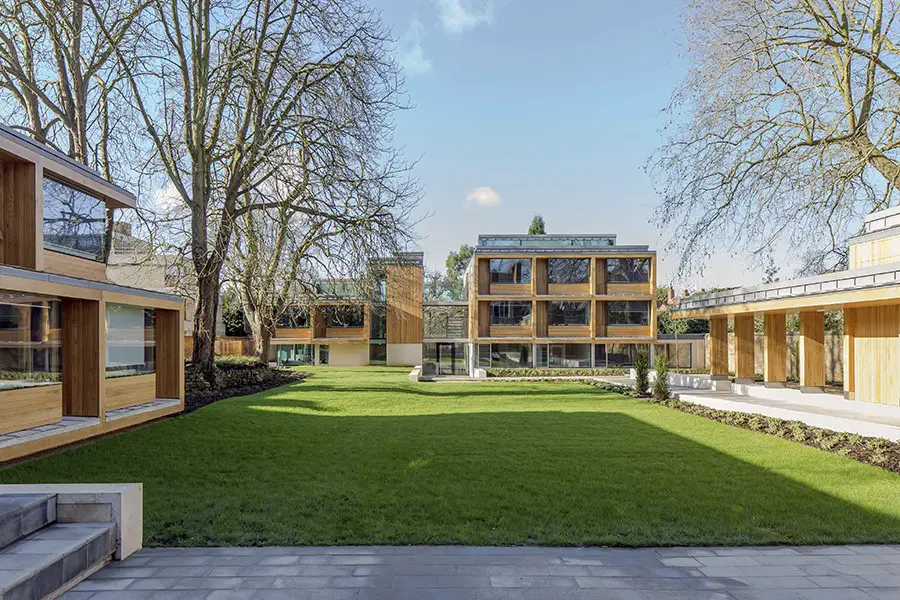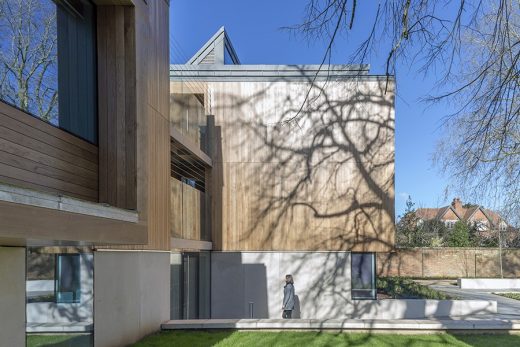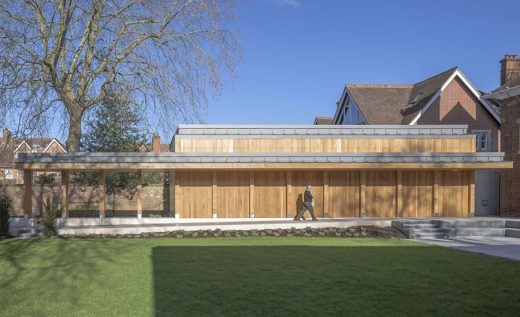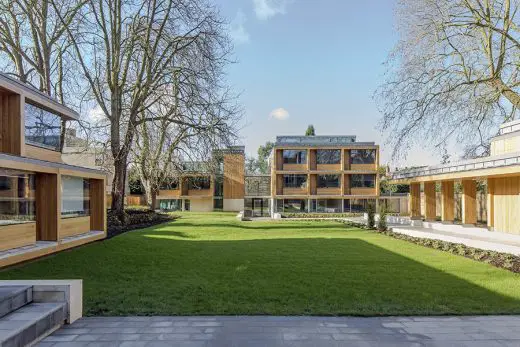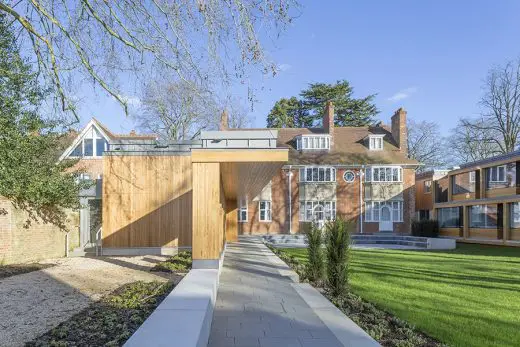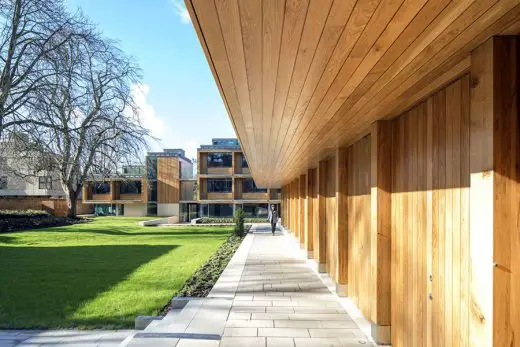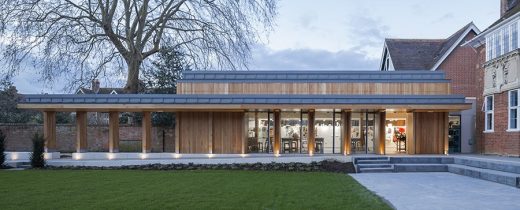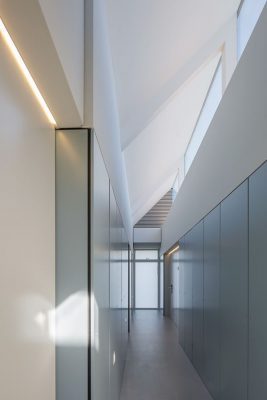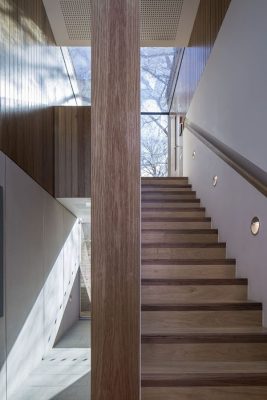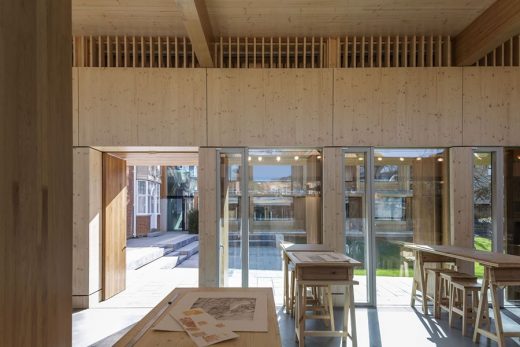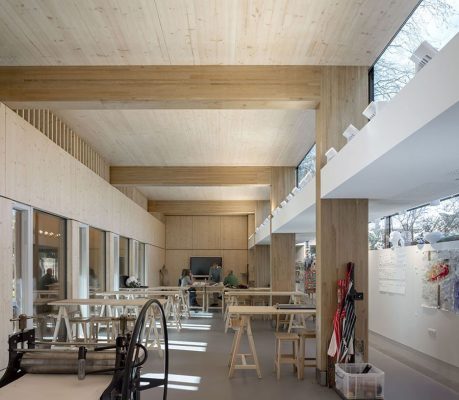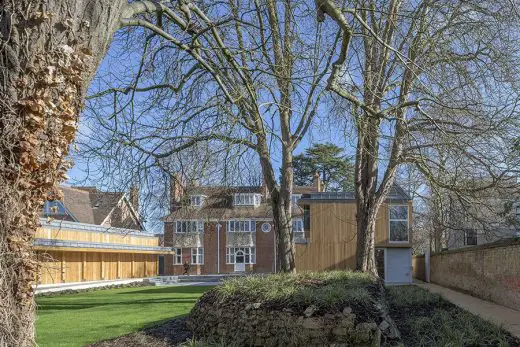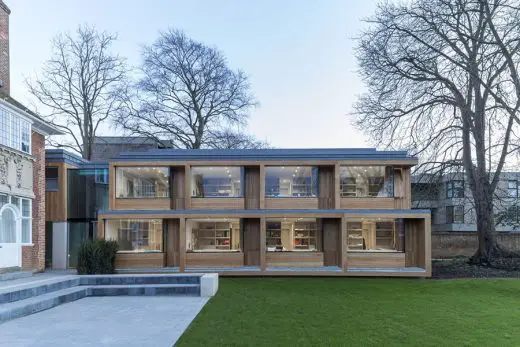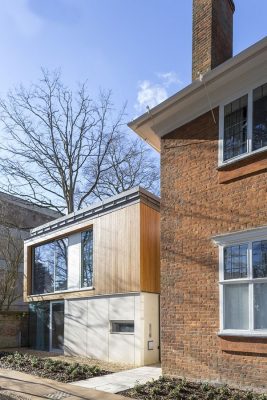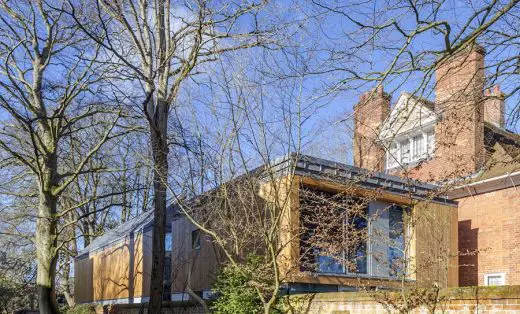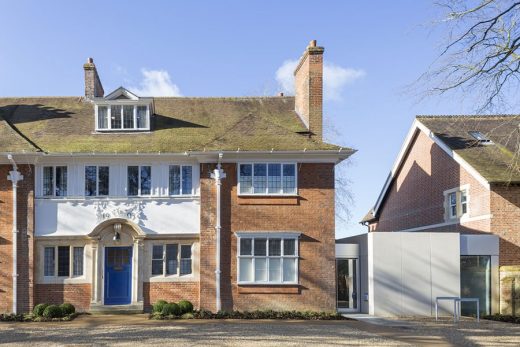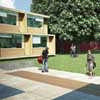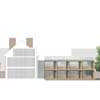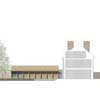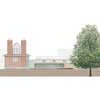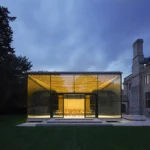St Clare’s College Oxford Education Building, Project Design, Property Images
St Clare’s College Oxford Architecture
Oxfordshire Education Development design by Hodder + Partners Architects, England, UK
2 Aug 2016
Wins Manchester Architects Awards Building of the Year 2016
The Building of the Year went to Hodder+Partners’ St Clare’s College in Oxford.
Lifetime achievement went to Phil O’Dwyer of OMI architects.
28 Jul 2016
St Clare’s College Oxford Building Award News
St. Clare’s, Oxford
Design: Hodder + Partners Architects, Castlefield, Manchester
St Clare’s College Oxford Building Shortlisted for Wood Awards 2016
Photographs: Peter Cook
Twenty outstanding buildings have been selected for the Wood Awards 2016 shortlist, featuring some of Britain’s best architectural designs in wood.
The shortlist will be showcased at 100% Design on 21-24 Sep at London Olympia.
The winners will be revealed at the 45th annual Wood Awards ceremony at Carpenters’ Hall on 22 Nov.
St. Clare’s was founded in 1953. The College provides tuition on courses in the International Baccalaureate (Pre-University), and English Language and Liberal Arts (senior courses). The majority of students live in College, although some take accommodation with home – stay families. The College has some 375 students enrolled at the College at any one time. In 2008 it held an architectural competition to redevelop 121 Banbury Road, the largest site and property in its portfolio.
The original site was created in 1903, when a large detached house, now Grade II listed, was built to the design of the architect Henry T Hare, RIBA President between 1917-1919. By the 1960s, the size of the site had increased to include a large rear garden, during which time the house had become a nun’s hostel. A chapel was added as a new annex to the original building, extending west into the deep rear garden.
The competition winning proposals comprises five individual buildings arranged around a new quadrangle, and woven between existing mature trees, with the listed building at the head. In all, the accommodation includes 36 study bedrooms, rooms for three wardens, two common rooms, and an art studio.
To the south side of the 1903 house, a new Warden’s lodge acts as a ‘hinge’ between the house and a tiered pavilion of student accommodation (which sits roughly on the site of the deconsecrated chapel). The art studio is built up to the existing north garden wall.
This mode of appropriation, building-up to garden walls is quite typical to Oxford, evident particularly with the outbuildings to several large properties along Banbury Road. Together, both wings enhance the near symmetry of the existing house, framing the aspect towards the garden and the orchard beyond.
The two residential pavilions at the bottom of the garden are sunk by half a storey into the ground so as to reduce the visual impact to neighbouring properties. Orientations of outlook are both east into the garden and west towards the orchard. A bridge link delicately connects the two blocks at first and second floor levels. The common room to the smaller block opens out onto its own partially sunken terrace.
The residential pavilions are constructed of oak-clad cross laminated timber (selected because of the constrained nature of the site), their cellular nature clearly expressed. Structurally glazed oriel windows optimise on views into the garden, with oak purge ventilation panels set deep into the construction.
The material language seeks to reinforce the notion of pavilions in a garden; upper storeys are articulated over the landscape with the lodge and garden pavilion having a base of precast concrete, and the south pavilion cantilevering over the lawn.
The naturally-ventilated art studio has a glulam portal frame in oak. Its sectional profile allows it to sit behind the garden wall, whilst allowing natural light to permeate the space by a structurally-glazed clerestory. The portal frames extend into the garden to define both a loggia (to which the studio is accessed by large oak doors) and an implied cloister to the garden pavilions.
The interplay between buildings and the enclosed garden quadrangle is a consistent theme throughout.
Photographs: Peter Cook – www.petercookphoto.com
St Clare’s College Oxford Building information from Hodder + Partners Architects
St Clare’s College Oxford Shortlisted for Wood Awards 2016, UK
St. Clare’s College provides courses in the International Baccalaureate. The original site, a large detached Grade II listed house, was created in 1903 by architect Henry T Hare. The listed building is at the head of the five new pavilion buildings arranged around a new quadrangle between existing trees.
The new buildings accommodate 36 study bedrooms, rooms for three wardens, two common rooms, and an art studio. The residential pavilions are constructed of oak-clad CLT, comprising 100mm thick wall and floor plates.
CLT was chosen as the structure had to be craned over the listed building and completed in time for the start of the new academic year. The cellular nature of the wall and floor plates can be seen in the structurally glazed oriel windows.
The choice of oak as a cladding material, both inside and out, was driven by the original building. The naturally ventilated art studio has an exposed glulam portal frame in oak.
St Clare’s College Oxford Building information from Wood Awards
St Clare’s College Oxford Building Shortlisted for Wood Awards 2016
24 Jul 2009
St Clare’s College
Oxford
Design: Hodder + Partners
A college which caters for 16-18 year olds, the majority of whom are international students, St. Clare’s embodies a unique character and ethos, made manifest in particular through its accommodation which is disposed throughout a number of former family dwellings set within the North Oxford Conservation Area.
This evident ‘domesticity’ imbued our design approach to a brief which required 60 additional student beds (through a mix of single and shared bedrooms), wardens’ accommodation and a new art department to be incorporated within the curtilage of a 1903 Grade II listed Arts and Crafts house by Henry T Hare, which currently serves as a student residence.
Our proposal fragments the programme into three distinct buildings which read as ‘pavilions in the landscape’: architectural pieces which are subservient in scale to the existing house, and enjoy an intimate relation to the garden’s enclosing brick walls and mature trees. Two of the pavilions ‘hinge’ around the existing house and extend longitudinally into the garden, thus framing and reinforcing the symmetry of its composition.
The third pavilion is sited at the bottom of the garden, its component parts articulated into two distinctive forms connected by bridges, which allow views through to the ancient orchard beyond.

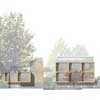


Timber, used both structurally and as cladding, reinforces the relationship between pavilions and garden, lending a reassuring calm to the setting, whose ‘domesticity’ prevails.
Planning permission was gained earlier this year and commencement on site is due for January 2010 with completion in the following December.
St Clare’s College Oxford – Building Information
Client: St Clare’s College, Oxford
Project Value: £3.75m
Architect: Hodder + Partners
Structural Engineer: Thornton Tomasetti Postawa de Hoog
Services Engineer: GDM Partnership
Landscape Architect: Planit
Acoustic consultant: Sandy Brown associates LLP
Fire consultant: Faber Maunsell
Quantity Surveyor: Edmond Shipway
CDM Coordinator: David M Eagle
Planning consultant: JPPC
Model Photography: Daniel Hopkinson
Model maker: Solutions
Location: Oxford
Contractor/Builder: Benfield & Loxley
Joinery Company: Benfield & Loxley, D Smith Joinery
Wood Supplier: Timbmet Ltd
Structural Timber Sub Contractor: Eurban Timber
Frame Supplier: Hasslacher Norica Timber
Wood Species: European Oak, Spruce
St Clare’s College Oxford images / information from Hodder + Partners 240709
Location: St Clare’s College, Oxford, England, UK
Oxfordshire Architecture
Oxford Buildings
Oxford Architecture Design – chronological list
Middle East Centre, St. Antony’s College
Zaha Hadid Architects
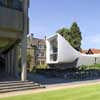
image from architect
University of Oxford Building
The Shulman Auditorium, Queen’s College Oxford
Berman Guedes Stretton

photo : Adrian Arbib
The Shulman Auditorium Oxford
Student Accommodation, Somerville College, University of Oxford
Niall McLaughlin Architects
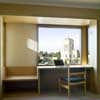
photo : Nick Kane
Student Accommodation Oxford
Brasenose College Buildings, Oxford University
Berman Guedes Stretton
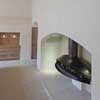
photo : Andy Spain
Brasenose College Oxford University
Comments / photos for the St Clare’s College Oxford Architecture page welcome.

